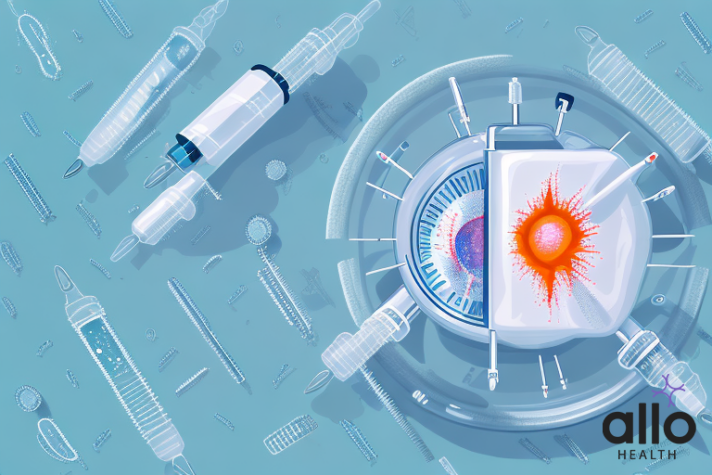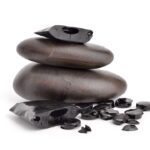Lignocaine Injection Uses

Allo Health is dedicated to personalized well-being, offering support and trusted information tailored to individual health goals. The platform emphasizes human-generated content, led by a distinguished medical team of experts, including physicians and sexual health specialists. Their commitment to credibility involves rigorous fact-checking, authoritative research, and continuous updates to ensure accurate, up-to-date information. Allo Health's unique approach goes beyond conventional platforms, providing expert-led insights and a continuous commitment to excellence, with user feedback playing a crucial role in shaping the platform's authoritative voice.

Dr. Aditi completed her undergraduate medical education at AJIMS, Mangalore, after which she worked in multi-speciality hospitals with COVID patients and in the Pain and Palliative medicine department. Driven by her experiences, she developed a keen interest in psychiatry. Dr. Aditi believes that mental health is just as, if not more important, than physical health.
Why This Was Upated?
Our experts continually monitor the health and wellness space, and we update our articles when new information became available.
Updated on 12 December, 2023
- Article was updated as part of our commitment to diversity, equity, and inclusion.

"The following blog article may discuss medical treatments and interventions. However, it is important to note that the information provided is for general educational purposes only and should not be considered as a substitute for professional medical advice, diagnosis, or treatment. Always seek the guidance of a qualified healthcare professional for personalized medical advice.
Book consultation
Medical treatments are complex and should be tailored to individual circumstances. The information presented in this blog may not be applicable to everyone, as each person's medical condition, history, and needs are unique. Only a qualified healthcare professional can evaluate your specific medical situation, consider relevant factors, and provide appropriate recommendations for diagnosis, treatment options, and monitoring.
It is crucial to note that self-diagnosis, self-medication, or relying solely on the information provided in this blog for treatment decisions can have serious health consequences. "
Lignocaine injection is a powerful painkiller used in medicine to treat a wide range of conditions. It works by blocking the transmission of pain signals to the brain, providing much-needed relief to patients suffering from pain.
What Is Lignocaine Injection?
Lignocaine, also known as lidocaine, is a local anesthetic medication used to numb an area of the body during medical procedures or surgeries. It belongs to the amide class of local anesthetics and works by blocking nerve signals in a specific area, preventing the sensation of pain. Lignocaine injections are commonly used in various medical settings, including hospitals, clinics, dental offices, and ambulatory surgery centers.
Here’s a detailed overview of lignocaine injection:
- Composition and Formulation: Lignocaine is available in various formulations, including injectable solutions, creams, gels, and patches. Injectable lignocaine usually comes in clear, colorless solutions and may contain additional ingredients to adjust pH, enhance stability, or improve solubility.
- Mechanism of Action: Lignocaine works by blocking sodium channels in nerve cells, particularly those responsible for transmitting pain signals. When the injection is administered, lignocaine prevents the influx of sodium ions into nerve cells, which inhibits the generation and propagation of nerve impulses. This effectively numbs the area where the injection is applied, providing temporary pain relief.
- Indications: Lignocaine injections are used for a variety of medical purposes, including:
- Local anesthesia for minor surgical procedures, such as suturing wounds or removing small growths.
- Pain management during medical interventions like biopsies, dental procedures, or endoscopies.
- Numbing of skin or tissue for insertion of intravenous (IV) lines or catheters.
- Treatment of certain heart rhythm disorders, where lignocaine is given intravenously to control irregular heartbeats (arrhythmias).
- Administration: Lignocaine injections are administered by healthcare professionals. The injection is usually given into the tissue or directly into a vein, depending on the intended use. The dosage and concentration of the injection vary based on the patient’s age, weight, and the procedure being performed. The onset and duration of action also depend on the specific formulation and dosage used.
- Precautions and Side Effects: While lignocaine injections are generally safe when administered by trained professionals, there are potential risks and side effects to consider:
- Allergic reactions can occur, although they are rare. Signs of an allergic reaction include rash, itching, swelling, severe dizziness, or difficulty breathing.
- Localized side effects at the injection site may include redness, swelling, or discomfort.
- In rare cases, lignocaine can lead to systemic side effects like nervous system disturbances, cardiovascular effects, or seizures. These are more likely to occur with larger doses or rapid administration.
- Contraindications: Lignocaine injections may not be suitable for individuals with certain medical conditions, such as allergies to amide-type local anesthetics, severe heart block, or certain heart rhythm disorders. It’s important for healthcare providers to consider a patient’s medical history and current health status before administering lignocaine injections.
- Duration of Action: The duration of pain relief provided by lignocaine injections varies depending on factors like the dose, concentration, and the specific area of the body being treated. In general, the effects of lignocaine wear off after a relatively short period, typically a few hours.
Lignocaine Injection Uses
Lignocaine injections, also known as lidocaine injections, have a wide range of medical uses due to their ability to provide local anesthesia and pain relief. Here are some detailed use cases for lignocaine injections:
- Local Anesthesia for Minor Surgical Procedures: Lignocaine injections are commonly used to provide local anesthesia for minor surgical procedures. These procedures may include:
- Suturing wounds: Lignocaine is injected around the wound area to numb the tissue, allowing for painless suturing.
- Removal of small growths or lesions: Before removing a mole, skin tag, or other small growth, a lignocaine injection can be administered to numb the area and minimize discomfort.
- Dental Procedures: Dentists often use lignocaine injections to numb the mouth area for various dental procedures, such as:
- Tooth extractions: Lignocaine injections are used to numb the gums and surrounding tissue, making the extraction process painless.
- Fillings and restorations: Injections are used to numb the area around the tooth that requires dental work.
- Root canal treatment: Lignocaine injections are used to provide pain relief during the complex procedure of treating infected tooth pulp.
- Pain Management during Medical Interventions: Lignocaine injections are used to manage pain during certain medical procedures, including:
- Biopsies: When a tissue sample is taken for examination, lignocaine injections help minimize the pain associated with the procedure.
- Endoscopies: Lignocaine injections can numb the throat or other areas, reducing discomfort during endoscopic examinations.
- Intravenous (IV) Catheter Insertion: Healthcare providers use lignocaine injections to numb the area before inserting an IV catheter. This reduces pain and discomfort for the patient during the insertion process.
- Nerve Block Procedures: Lignocaine injections are used for nerve block procedures, where a specific nerve or group of nerves is numbed to provide targeted pain relief. This can be useful for chronic pain conditions or certain surgical procedures.
- Cardiovascular Applications: Lignocaine injections are sometimes used in emergency medical situations for their antiarrhythmic properties. They can help stabilize irregular heart rhythms (arrhythmias) and prevent further complications.
- Anesthesia for Certain Skin Procedures: Lignocaine injections are used to provide anesthesia for various dermatological procedures, such as the removal of skin lesions, cysts, or warts.
- Pain Relief for Conditions like Shingles: In cases of conditions causing nerve pain, such as herpes zoster (shingles), lignocaine injections can be used to provide temporary pain relief by numbing the affected nerve area.
- Minor Surgical Procedures in Children: Lignocaine injections are often used to provide local anesthesia for minor surgical procedures in children, as they can be less intimidating and painful than other forms of anesthesia.
Lignocaine Injection Side Effects
Lignocaine injections, like any medication, can have side effects, although they are generally well-tolerated when used appropriately under medical supervision. Here are the potential side effects of lignocaine injections, categorized by their prevalence and severity:
- Common Side Effects: These side effects are relatively common and often mild, usually resolving on their own without causing significant harm. They include:
- Local Reactions: Redness, swelling, or discomfort at the injection site are common and typically temporary.
- Numbness: Since the injection numbs the area, you may feel temporary numbness around the injection site.
- Less Common Side Effects: These side effects occur less frequently and might require medical attention if they become bothersome:
- Allergic Reactions: Although rare, some individuals may develop an allergic reaction to lignocaine. Signs of an allergic reaction include hives, itching, rash, swelling (especially of the face, lips, or tongue), and difficulty breathing.
- Nervous System Effects: In some cases, lignocaine can cause nervous system-related side effects, such as dizziness, lightheadedness, tremors, or confusion.
- Cardiovascular Effects: Rarely, lignocaine injections can lead to changes in heart rate, blood pressure, or heart rhythm. These effects are more likely with higher doses or rapid administration.
- Systemic Effects: Systemic side effects involve effects on the entire body and are rare with proper medical administration. They include:
- Central Nervous System Effects: High doses or rapid injections can lead to more serious nervous system effects like seizures, confusion, or unconsciousness.
- Cardiovascular Effects: In some cases, lignocaine can affect the heart, leading to symptoms such as irregular heartbeat, slowed heart rate, or even cardiac arrest. These effects are more common with intravenous administration of higher doses.
- Adverse Reactions at Injection Sites: Some individuals may experience adverse reactions specifically related to the injection site, including:
- Tissue Irritation: Lignocaine injections can sometimes cause irritation, inflammation, or tissue damage at the injection site, although this is uncommon.
- Prolonged Numbness: In some cases, the numbing effect of lignocaine might last longer than expected. This is usually not a major concern but should be monitored by a healthcare professional.
The vast majority of patients do not experience severe side effects from lignocaine injections, especially when they are administered by trained medical professionals in appropriate doses and settings. Your healthcare provider will assess your medical history, allergies, and potential contraindications before deciding on the appropriate treatment plan.
If you experience any unusual or severe side effects after receiving a lignocaine injection, it’s crucial to seek medical attention promptly. Allergic reactions, cardiovascular symptoms, and severe nervous system effects should be addressed immediately. Always communicate openly with your healthcare provider about any concerns or symptoms you may be experiencing.
Frequently Asked Questions
(1) What is a lignocaine injection used for?
Lignocaine injections are used to numb specific areas of the body during medical procedures or surgeries, providing temporary pain relief.
(2) How does lignocaine work for local anesthesia?
Lignocaine blocks nerve signals by inhibiting sodium channels, preventing the transmission of pain signals in the targeted area.
(3) Are lignocaine injections only used for surgeries?
No, they are also used for dental procedures, IV catheter insertion, pain management during medical interventions, and nerve block procedures.
(4) Can lignocaine injections be used for heart-related issues?
Yes, lignocaine injections can help stabilize irregular heart rhythms (arrhythmias) in emergency situations.
(5) Are there side effects of lignocaine injections?
Common side effects include local reactions like redness and swelling. Less common effects include allergic reactions or nervous system disturbances.
(6) How long does the numbing effect of a lignocaine injection last?
The duration of pain relief varies, usually lasting a few hours, but it depends on factors like dose and formulation.
(7) Are lignocaine injections safe for children?
Yes, they can be used for minor surgical procedures in children, offering less intimidating anesthesia.
(8) Can lignocaine injections be used for chronic pain conditions?
Yes, nerve block procedures involving lignocaine injections can provide targeted pain relief for chronic conditions.
(9) Are there risks involved with lignocaine injections?
While generally safe, rare cases of allergic reactions, cardiovascular effects, or nervous system disturbances can occur.
(10) How are lignocaine injections administered?
Healthcare professionals inject lignocaine into tissues or veins, depending on the procedure and area to be numbed.
(11) Can lignocaine injections be used for skin conditions?
Yes, they can provide anesthesia for skin procedures like removing lesions, warts, or cysts.
(12) Is numbness after a lignocaine injection concerning?
Temporary numbness around the injection site is normal, but prolonged numbness should be monitored by a healthcare provider.
(13) Can lignocaine injections help with shingles pain?
Yes, they can provide temporary pain relief by numbing the affected nerve area in conditions like shingles.
(14) Do lignocaine injections have cardiac effects?
Yes, lignocaine injections can affect heart rate and rhythm, especially with higher doses or rapid administration.
(15) Can anyone receive a lignocaine injection?
Whenever you take more than one medicine, or mix it with certain foods or beverages, you”re at risk of a drug interaction.






































